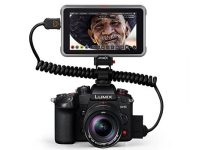Blackmagic’s DaVinci Resolve puts countless tools at your disposal. Color grading is still its most impressive aspect and where you will find some of the smartest options. One of these is Auto Color, aka Auto Balance, which basically gives you a nice looking image with a single click.
Alex Jordan from Learn Color Grading takes a much deeper look at the tool and asks whether you should be using the Auto Balance tool.
Many colorists I’m sure avoid anything automatic, there’s always an assumption that auto is a bad word when it comes to creative options. Is that really fair for this tool? Or is it something you should absolutely use to help make your life easier.
The stigma with auto color likely comes from many years of automatic tools in photo and video editing doing a bad job.
Sometimes you’ll find that one image that just works with it, but for the most part you might as well have just done it yourself. Or simply that it makes it seem like the filmmaker isn’t taking an active part in the creative process.
If you haven’t even heard of it before while in the Color tab in Resolve look to the bottom left corner and you’ll see an “A” button. That’s it, just click that button and it’ll analyze the footage and attempt to balance the color and contrast.
The few examples Jordan shows us that it actually does a great job. If you are looking to get something quick and painless or even just find a good starting point the Auto Balance tool should be in your toolkit.
One thing to understand about the tool is how it works. Resolve simply analyzes the frame you are currently showing in the player.
So if you are on a frame that is super bright the tool will bring the entire clip’s brightness down, even if that doesn’t actually work in practice. That means you’ll need to find a frame that is representative of the entire clip.
Another thing to know is that the Auto Balance tool is applied to the node. Meaning you can use multiple nodes with different instances of the tool. So if you wanted to try using it twice in a row that is possible with a couple serial nodes.
A great example on how you can use it is to assign it to a keyboard shortcut. This gives you access to it in the Edit tab.
So if you are moving quickly through the edit, perhaps with log footage, you can get a workable preview of each shot by tapping your shortcut.
Could be very helpful to run through some footage with a client and not worrying about them looking at log footage.
Now, none of this addresses the stigma automatic tools have for people who want every little bit of control over their projects. It’s best to not think about it as automatic, and more just another way to get your footage looking great.
You can apply the automatic color and then adjust the power or even apply even more edits on top. Or it could simply be the basic color correction node before you perform any creative grades you want to add.
Of course, it still isn’t a perfect tool. It lacks any sort of local adjustments, so you will likely still need to go in and grade your footage.
Have you used this tool in your work?
[source: Learn Color Grading]
Disclaimer: As an Amazon Associate partner and participant in B&H and Adorama Affiliate programmes, we earn a small comission from each purchase made through the affiliate links listed above at no additional cost to you.


